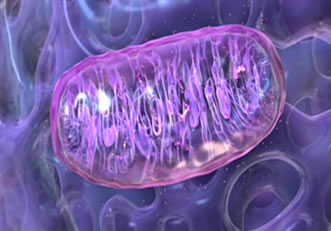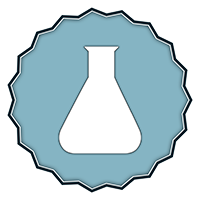Happy New Year! I hope everyone enjoyed their holidays as much as I did. The holidays are such a special time of the year; they seem to elevate nearly everyone’s mood and energy level. That is of course for everyone except for those who have a substance abuse disorder.
For them the holidays are depressing and draining. I can’t help but to wonder if all of this energy and mood shifting would occur if people were more aware of Mitochondria and how important it is to our health, especially someone in recovery.
Mitochondrion is our body’s biological powerhouse. They are found in multiple numbers in every cell in our body. It is our everything. Mitochondria gives us the energy to move, breathe, pump our hearts, move blood through our veins, digest food, keep our brains functioning, and generally live life. Without it, we’d most likely cease to exist.
Here is a simplified version of how this process works. NAD (Nicotinamide adenine dinucleotide) is a metabolic coenzyme found in every cell, every organ and every tissue – and they need constant replenishment. It is an activated form of vitamin B3. When NAD is bound with hydrogen, it becomes NADH. NAD is also the carrier for reactive hydrogen as it becomes NADH. Once the NAD becomes ‘loaded with hydrogen (NADH) it enters the electron transport chain in the mitochondria. Down the line it is exposed to oxygen and as a result generates energy or, ATP (adenosine triphospate), along with water. This is the energy source that powers the cells metabolic activities within the 100 trillion cells in our bodies. When NAD is compromised, serious disease can, and often does, ensue.
I know the process is a bit difficult to grasp. Regardless if you get it our not, it is imperative that you understand just how important mitochondria is to your overall health especially if you suffer from substance abuse disorder.
The chemicals necessary to produce NADH comes in trace amounts from the vitamins, minerals, complex carbohydrates, fats and proteins that we eat. Many of these essential components are lost through food processing and cooking. Energy production is diminished when any of these nutrients are low. Moreover the enzymes needed to complete the energy producing process in the mitochondria are often inhibited or destroyed by chemical or physical toxins – such as opioids and other narcotic drugs – that create oxidative, or free radical, damage. The primary site of free radical damage is on mitochondrial DNA (mDNA).
Low NADH can have a negative effect on their function and also trigger fatigue, depression, anxiety, sleep disorders and mood changes – all of these characteristics are commonly exhibited in addicts. Fatigue is often the first sign of NAD deprivation.
In over thirty years of treating addicts I’ve seen literally thousands of people fresh out of detox. With only a handful of exceptions, they all showed signs of low energy and fatigue. Could impaired Mitochondria as a result of addiction to toxic illicit and pharmaceutical drugs be influencing these conditions? Absolutely.
I’m sure it comes as no surprise to anyone that addiction wreaks havoc on the body and the brain causing both long and short term detriment. Its damaging effects on Mitochondria are no exception. Studies published on the National Institutes of Health (NIH) site indicate that opiate addiction has been associated with mitochondrial abnormalities – none of which are good. In fact, in another study also published on the NIH site found that some addictive drugs alter mitochondrial and nuclear gene expression.
There is also another genetic component at play here. Mitochondrial DNA is all received from the mother through the egg (no mitochondria are found in sperm). Therefore genetic and chronic NAD Energy Deficiency (NED) is transferred from mother to child and is already present at the moment of conception. I’ve seen estimates as high as 10% of people suffer from an irreversible chronic NED. These people could never eat enough to elevate their NAD to normal levels.
NAD also plays a vitally important role in the addicted brain. Studies have shown that it synthesizes dopamine (DA) as well as other neurotransmitters closely associated with addiction.
This is significant. Dopamine has a lot of responsibilities including being the primary neurotransmitter of reward and pleasure. It communicates calm and wellness to the rest of the brain. In April of 1990 Dr. Kenneth Blum and Ernest Noble, M.D., Ph.D. made global headlines with their seminal discovery of the ‘addiction gene’ published in the Journal of American Medical Association (JAMA). What they found was that the dopamine receptor D2-A1 allele (DRD2-A1) had up to 40% fewer receptors.
This single discovery forever changed the way we view and treat addiction. What Doctors Blum and Noble found was that people with the DRD2-A1 genotype were not getting the complete ‘calm and wellness’ message leaving them feeling uneasy. Consequently, these people often seek out external stimuli such as drugs, alcohol, sex, gambling, gaming, sugary foods and other risky behavior that can elevate their dopamine function. NAD stimulates production of dopamine and serotonin, thereby improving brain function in addicts.
Is there a place for NAD in addiction recovery? From my own personal experiences I’d say without a doubt. At my facility we use a product called SynaptaGenX™ that has been developed and formulized by Dr. Blum. SynaptaGenX™ has NADH in it. I take it daily and can tell you first hand I have more energy and better cognition. My clients tell me it eases their cravings.
By most standards Mitochondria and NAD are relatively new discoveries. It was Richard Altmann, a German cell and structure researcher, who discovered mitochondria in 1890 and Karl Benda, a German physician, who later gave them the name mitochondria. It was not until the mid-1950s when a new approach to research was developed that the modern understanding of mitochondrial function was realized. NAD was discovered in 1906 by the British biochemists Arthur Harden and William John Young.
More recently, Mitochondria and NAD have been making headlines for their ‘anti-aging’ properties. David A. Sinclair, Ph.D., a Professor in the Department of Genetics at Harvard Medical School, and his colleagues have seen great success in their studies and testing of Mitochondria’s influence on reversing aging.
Scan the Internet and you’ll find a plethora of information on Mitochondria and NAD. What is difficult to find is hard science on their effects on the addicted brain. There are a lot of things being said these days by a lot of people touting the benefits of healthy Mitochondria. However there seems to be more information in advertisements and marketing materials than in peer reviewed scientific and medical journals. I’m not suggesting that the claims are untrue, but rather unsubstantiated by scientific tests and studies. That being said, I encourage scientists, doctors and researchers to study and analyze Mitochondria and NAD’s relationship with addiction and recovery so that we can all benefit from their life-giving properties.
From the limited amount of science that we do have right now, we know NADH can help people in recovery. The question remains to what degree. It is no secret that most people with substance use disorders suffer from nutrient deficiencies. Our body’s energy producing process depends on nutrients to function. Low nutrient intake equates to low energy production in the body that can exacerbate addiction and recovery.
Is NADH right for you in this New Year? You should always speak with your doctor or health care professional before you start any new regiment. My suggestion would be to find a doctor in your area proficient in Integrative Medicine. NAD Deficiency often goes undetected and/or undiagnosed and can lead to serious disease. This is not something you can ignore. If you are in recovery I strongly suggest that you take the step to find an Integrative Medicine Doctor and examine your options.
John Giordano, Doctor of Humane Letters, MAC, CAP, is the founder of ‘Life Enhancement Aftercare & Chronic Relapse Recovery Center,’ an Addiction Treatment Consultant, President and Founder of the National Institute for Holistic Addiction Studies, Chaplain of the North Miami Police Department and is the Second Vice President of the Greater North Miami Beach Chamber of Commerce. He is on the editorial board of the highly respected scientific Journal of Reward Deficiency Syndrome (JRDS) and has contributed to over 65 papers published in peer-reviewed scientific and medical journals.


